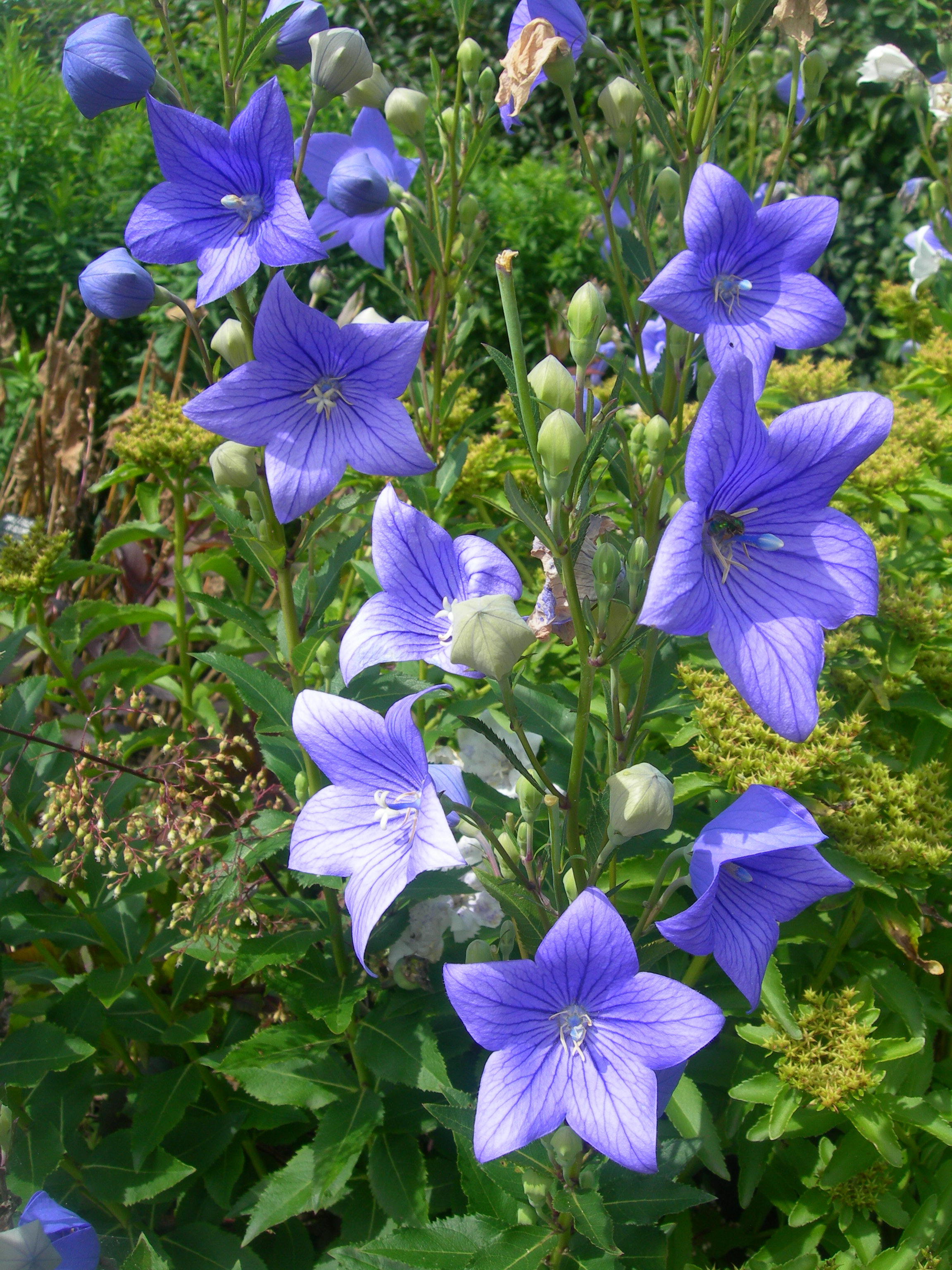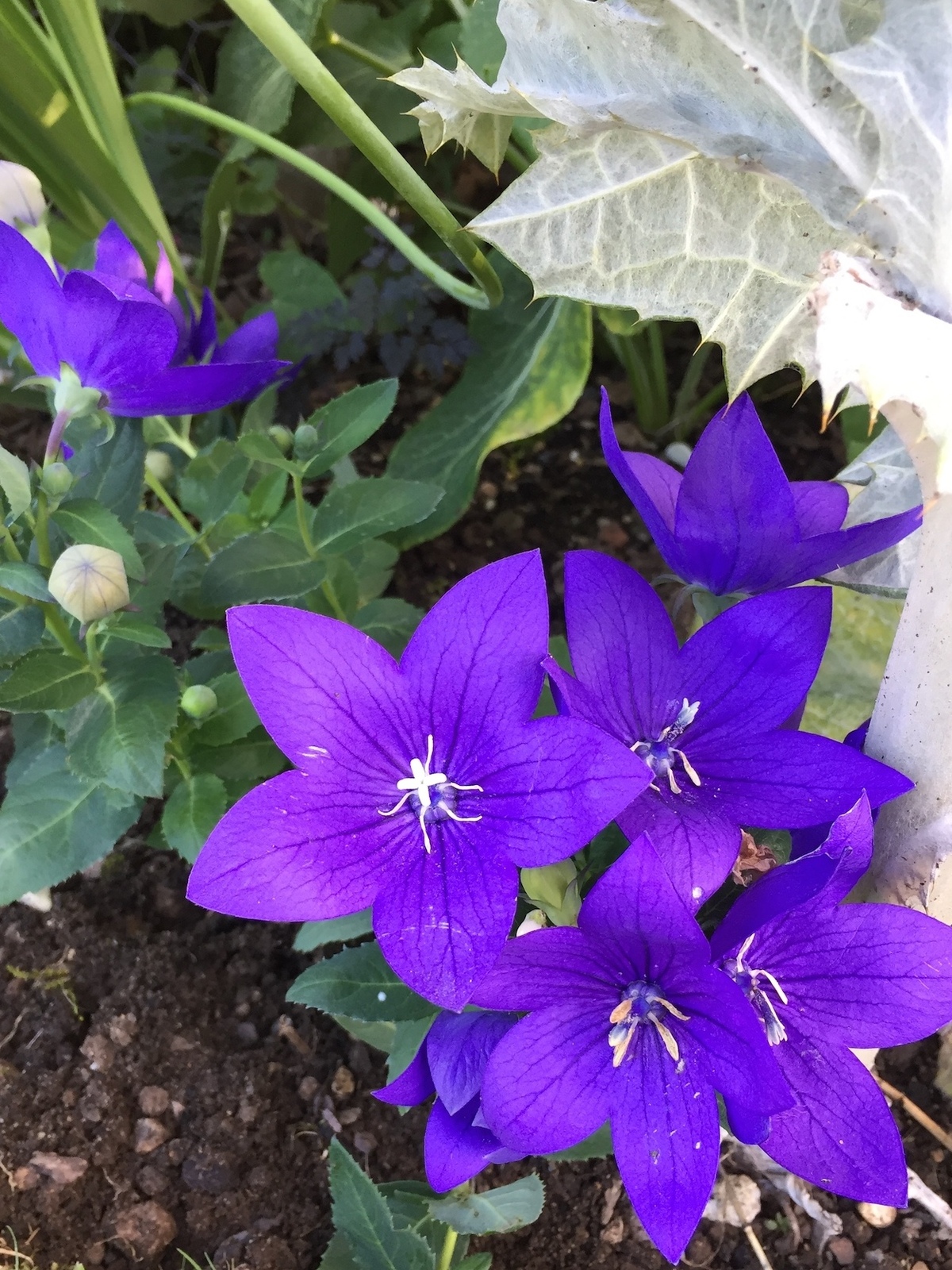Absolutely! Here’s a comprehensive 3000-word article about Platycodon grandiflorus, commonly known as the Balloon Flower, formatted with `
` and `
` tags instead of “.
Origins and Distribution
Botanical Characteristics
Flower Morphology

The most striking feature of Platycodon grandiflorus is its balloon-like flower buds. These inflated buds, which resemble small balloons, gradually open to reveal star-shaped flowers with five broad petals. The flowers typically range in color from deep blue to violet, although pink and white cultivars are also available. The flowering period usually occurs in summer, lasting from June to August.
Leaf Structure
The leaves of Platycodon grandiflorus are arranged in opposite pairs along the stems. They are lance-shaped, with serrated edges and a grayish-green hue. The leaves contribute to the plant’s overall aesthetic appeal, providing a subtle backdrop to the vibrant flowers.
Stem and Root System
The plant features upright, branching stems that can reach heights of 1 to 3 feet (30 to 90 cm), depending on the cultivar and growing conditions. It possesses a thick, fleshy taproot that enables it to withstand periods of drought. This robust root system also contributes to its longevity, as Platycodon grandiflorus can live for many years.
Cultivation and Care
Optimal Growing Conditions
Planting and Propagation

The best time to plant Platycodon grandiflorus is in spring or fall. Seeds can be sown directly into the garden or started indoors several weeks before the last frost. Division of the root clump is also a viable method of propagation, although it should be done carefully to avoid damaging the taproot.
Watering and Fertilization
While Platycodon grandiflorus is relatively drought-tolerant, it benefits from regular watering during dry spells. Overwatering should be avoided, as it can lead to root rot. A balanced fertilizer can be applied in spring to promote healthy growth and abundant flowering.
Pruning and Maintenance
Deadheading spent flowers can encourage further blooming and prevent self-seeding, which can result in less desirable offspring. Taller cultivars may require staking to prevent them from flopping over. In late fall or early spring, the plant can be cut back to ground level to prepare for the next growing season.
Potential Pests and Diseases
Cultivars and Varieties
‘Sentimental Blue’

This popular cultivar is known for its deep blue flowers and compact growth habit. It is ideal for borders, rock gardens, and containers.
‘Fairy Snow’
‘Fairy Snow’ features pure white flowers that add a touch of elegance to any garden. It is a versatile cultivar that can be used in a variety of landscape settings.
‘Apoyama’
This dwarf cultivar is characterized by its compact size and abundant blue flowers. It is well-suited for small gardens and containers.
‘Pink Shell’
‘Pink Shell’ offers delicate pink flowers that provide a soft and romantic touch to the garden. It is a favorite among gardeners seeking a unique color variation.
‘Double Blue’
This cultivar boasts double flowers, meaning it has extra petals, creating a fuller and more dramatic appearance than the standard single flowered variety.
Medicinal and Culinary Uses
Traditional Medicine
In traditional East Asian medicine, the root of Platycodon grandiflorus, known as “Doraji” in Korean and “Jiegeng” in Chinese, has been used for centuries to treat respiratory ailments such as coughs, colds, and bronchitis. It is believed to have expectorant, anti-inflammatory, and immune-boosting properties.
Culinary Applications
The root of Platycodon grandiflorus is also used in culinary applications, particularly in Korean cuisine. It is often pickled, sautéed, or added to soups and stews. The root has a slightly bitter taste and a crunchy texture.
Ecological Importance
Pollinator Attraction
The vibrant flowers of Platycodon grandiflorus attract a variety of pollinators, including bees and butterflies. This makes it a valuable addition to gardens that aim to support biodiversity and promote ecological balance.
Soil Stabilization
The plant’s robust root system helps to stabilize soil and prevent erosion. This makes it a useful species for planting on slopes and in areas prone to soil disturbance.
Landscape Applications
Borders and Edges
Rock Gardens
Its compact growth habit and tolerance for well-drained soil make it ideal for rock gardens. It adds a touch of color and texture to these unique landscape settings.
Containers and Patio Gardens
Dwarf cultivars are particularly well-suited for containers and patio gardens. They can be grown on balconies, terraces, and other small spaces, bringing beauty and fragrance to urban environments.
Cut Flower Arrangements
The long-lasting flowers of Platycodon grandiflorus make them excellent for cut flower arrangements. They add a touch of elegance and sophistication to bouquets and floral displays.
Symbolism and Cultural Significance
Symbolism
In various cultures, Platycodon grandiflorus symbolizes honesty, sincerity, and unchanging love. Its enduring beauty and resilience make it a meaningful gift and a cherished garden plant.
Cultural Significance
In Korea, the plant, known as Doraji, is deeply ingrained in cultural traditions. It is often featured in folk songs and traditional art. The root is a staple in Korean cuisine and traditional medicine.
Future Prospects
Breeding and Hybridization
Ongoing breeding and hybridization efforts are focused on developing new cultivars with improved flower colors, sizes, and growth habits. This will expand the range of choices available to gardeners and enhance the plant’s appeal.
Sustainable Gardening
As interest in sustainable gardening practices grows, Platycodon grandiflorus is poised to become an even more popular choice. Its drought tolerance, low maintenance requirements, and ecological benefits align with the principles of eco-friendly gardening.
In conclusion, Platycodon grandiflorus is a remarkable plant that offers a wealth of beauty, versatility, and cultural significance. Whether grown for its ornamental appeal, medicinal properties, or culinary uses, it is a valuable addition to any garden or landscape. Its enduring charm and adaptability ensure its continued popularity for generations to come.

:max_bytes(150000):strip_icc()/gerber-daises-4121360-hero-bfd1a98e8bb44c45891b84d9df63b5ac.jpeg?resize=200,135&ssl=1)

